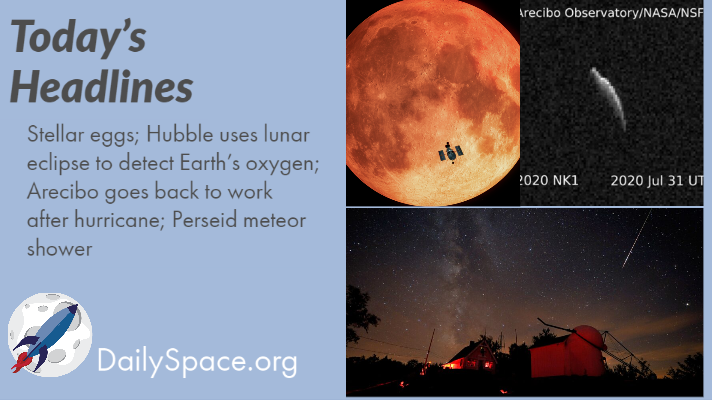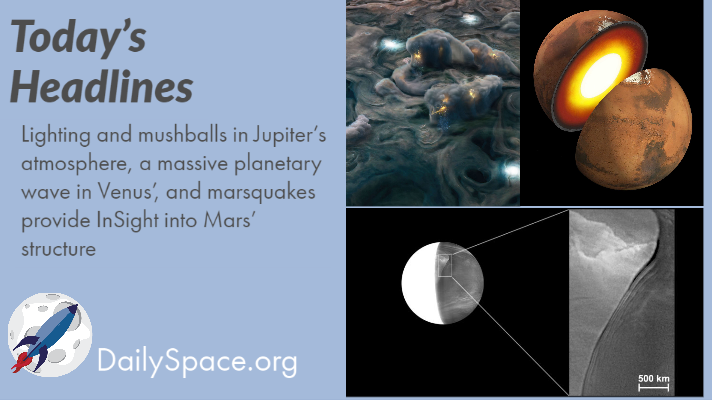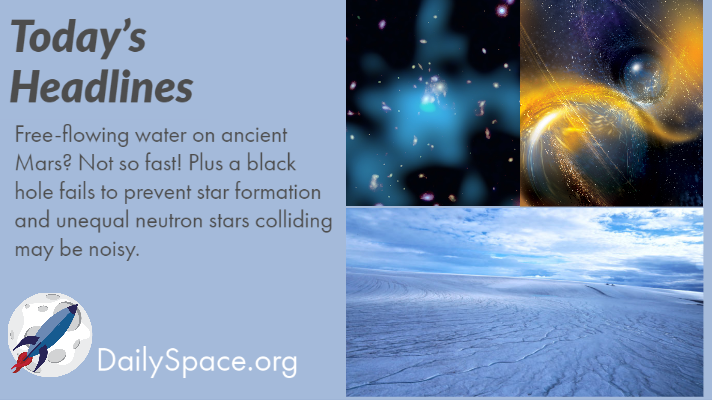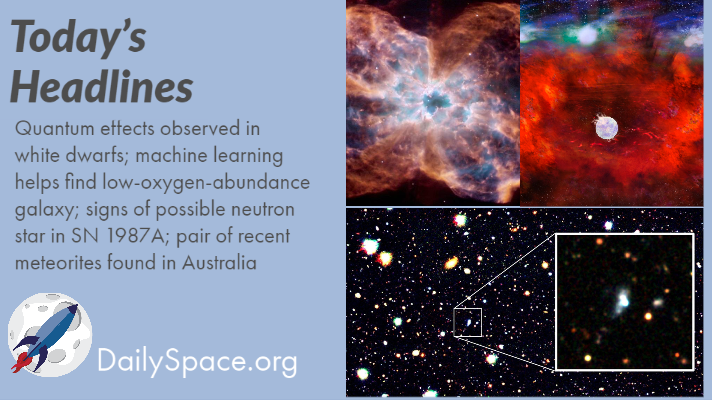
All things Ceres! Plus guest Dr. David Grinspoon
Join us today as we cover all the news about Ceres that culminated in SEVEN papers, revealing the existence of a salty subsurface ocean and active cryovolcanism.

Join us today as we cover all the news about Ceres that culminated in SEVEN papers, revealing the existence of a salty subsurface ocean and active cryovolcanism.

Join us today for news about the evolution of stellar eggs. Additionally, Hubble takes advantage of a lunar eclipse to probe our atmosphere. Then we celebrate Arecibo reopening after Hurricane Isaias and doing more science. Plus it’s time for the Persieds!

Join us today for a trio of solar system stories! First, shallow lightning and mushballs in Jupiter’s atmosphere help find “missing” ammonia. Next, a massive planetary wave in Venus’ atmosphere goes back at least 35 years. Finally, InSight’s seismograph provides the first direct measurement of subsurface boundaries.

Join us for this week’s Rocket Roundup with host Annie Wilson as we look back at the launches that did and didn’t happen, including the Mars Perseverance launch, a Roscosmos launch, and the splashdown of the SpaceX Demo-2 capsule. Plus! A surprise Starship SN5 hop.

Join us today as we talk about newly released research that suggests the waters on ancient Mars were subglacial and not free-flowing. Also, a black hole goes dormant and star formation goes wild. Meanwhile, computer models show that unequal neutron stars colliding may cause a big “bang” that can be detected on Earth.

Join us today as we look at how quantum mechanics and Einstein’s theory of general relativity work together in white dwarfs. Machine learning is used to find a galaxy with an extremely low abundance of oxygen. Scientists find signs of a neutron star in supernova 1987A. And researchers managed to locate two recently arrived meteorites in Australia with the help of fireball detection cameras.